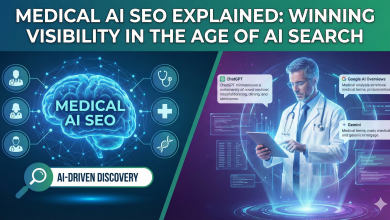For decades, business software has focused on one thing, completing tasks.
Track this project. Assign that ticket. Record this sale. Measure that metric.
It worked when the world moved slower. But in 2025, when industries evolve monthly and competition shifts overnight, being busy isn’t the same as being effective.
The next generation of software won’t just help teams do more work, it will help them do the right work.
The Problem With Task-Driven Tools
Most companies rely on a crowded tech stack: project management apps, CRMs, chat platforms, analytics dashboards, and time trackers.
Each tool adds value, but few connect meaningfully. The result is a maze of disconnected data that keeps teams focused on outputs, not outcomes.
Employees check boxes and close tickets, yet leadership can’t easily tell if those activities support the company’s larger goals.
It creates an illusion of progress: everyone’s busy, but not everyone’s moving in the same direction.
Businesses rarely fail because their teams aren’t working hard.
They fail because teams are working hard on the wrong things.
The Rise of Strategy-First Systems
To solve this, a new generation of software platforms is emerging, tools that start with strategic intent, not just task execution.
Instead of asking “What do we need to finish today?”, these systems ask:
“What should we focus on today to move closer to our goals?”
Strategy-first software bridges the gap between planning and execution.
It uses features like AI-driven insights, real-time scenario modeling, and data alignment to ensure that every action connects directly to measurable business objectives.
That’s the difference between checking tasks and making impact.
Why This Shift Matters in 2025
Modern markets don’t move in straight lines anymore.
Economic conditions, customer expectations, and technology trends change too fast for traditional, fixed project plans to keep up.
In this volatile environment, success depends on strategic flexibility, the ability to adjust direction in real time without losing sight of the bigger picture.
Task-first systems assume stability: you plan once, then execute.
But today’s organizations need tools that adapt, tools that read the signals of change and help leaders pivot intelligently.
That’s what strategy-first platforms deliver. They connect daily execution to dynamic business goals, allowing teams to evolve their plans without chaos or confusion.
From Static KPIs to Continuous Intelligence
The next generation of business intelligence will move beyond static key performance indicators (KPIs).
Instead, it will rely on continuous intelligence, systems that learn from every project, transaction, and interaction to refine strategic direction over time.
Instead of simply tracking performance, these systems analyze patterns to answer questions like:
- Are we investing in the right priorities?
- Which projects deliver the most strategic value?
- Where are we drifting from our long-term vision?
This transformation turns business software from a reporting mechanism into a strategic partner, one that learns, adapts, and helps guide leadership decisions based on live data.
The Hidden Costs of Task-Only Thinking
On the surface, task-based systems look efficient. But when you zoom out, they often reveal fragmentation, departments duplicating work, teams chasing misaligned goals, and managers tracking irrelevant metrics.
McKinsey research shows that organizations lose up to 30% of their productivity due to poor strategic alignment.
That’s not a technology failure, it’s a focus failure.
In industries like finance, manufacturing, and tech, where decisions ripple across entire ecosystems, misalignment compounds quickly.
The difference between companies that grow and those that plateau often comes down to one factor: whether their daily operations support a unified, measurable strategy.
How Strategy-First Platforms Bridge the Gap
Strategy-first systems close the disconnect between vision and execution.
They integrate leadership goals directly into the tools teams use every day, ensuring that progress is both visible and meaningful.
These platforms combine several critical elements:
- AI-Driven Strategic Insights – Analyze goals, performance data, and external trends to suggest the next best moves.
- Collaborative Alignment Tools – Connect every department under a shared set of priorities instead of isolated objectives.
- Dynamic Roadmapping – Enable leaders to adjust plans instantly when markets shift or new opportunities appear.
By connecting these layers, businesses gain a single source of truth, a live map showing how every action contributes to long-term success.
Modern tools like VWCG Tools are already exploring this approach by blending decision intelligence with execution management.
The goal isn’t to replace human judgment but to enhance it, giving leaders data-backed clarity in real time.
The Advantage of Strategic Agility
In today’s economy, the most valuable capability isn’t size, it’s adaptability.
A company that can change course faster than competitors often wins, even with fewer resources.
Strategy-first tools institutionalize agility.
They provide visibility across every department, highlight risks before they escalate, and identify high-impact opportunities early.
Instead of reacting to market shifts after the fact, companies can anticipate them, adjusting strategy, reallocating resources, and staying ahead of disruption.
That’s not just operational efficiency. It’s strategic advantage.
Beyond Productivity: Building Strategic Intelligence
The next evolution of enterprise software isn’t about doing more, it’s about thinking better.
Businesses are shifting from measuring activity to measuring alignment.
They want systems that translate every decision into insight and every project into purpose.
This is where intelligent planning frameworks come in, connecting financial data, workforce analytics, and market signals into one adaptive system.
Organizations adopting these principles see a major shift:
Meetings become shorter, reports become smarter, and strategies become living systems instead of static documents.
Companies that embrace this mindset, through tools like strategy management platforms, are building resilience by design, not by reaction.
The Future of Strategy-First Software
The evolution of business tools reflects the evolution of business thinking itself.
We started with productivity tools to automate manual work.
Then came collaboration tools to connect people.
Now we’re entering the age of strategic intelligence, where software doesn’t just help you work faster, it helps you think smarter.
As more organizations digitize their planning and execution, the need for strategic clarity will only grow.
The companies that thrive will be those that view technology not as a task manager, but as a decision-making ecosystem.
Final Thoughts
The software that defines the next decade won’t just automate what we do, it will illuminate why we do it.
It will give leaders clarity, teams purpose, and organizations direction.
Because success in the modern era isn’t about completing more tasks,
it’s about ensuring every task advances the mission.
The businesses that adopt strategy-first thinking today will be the ones shaping markets tomorrow.



